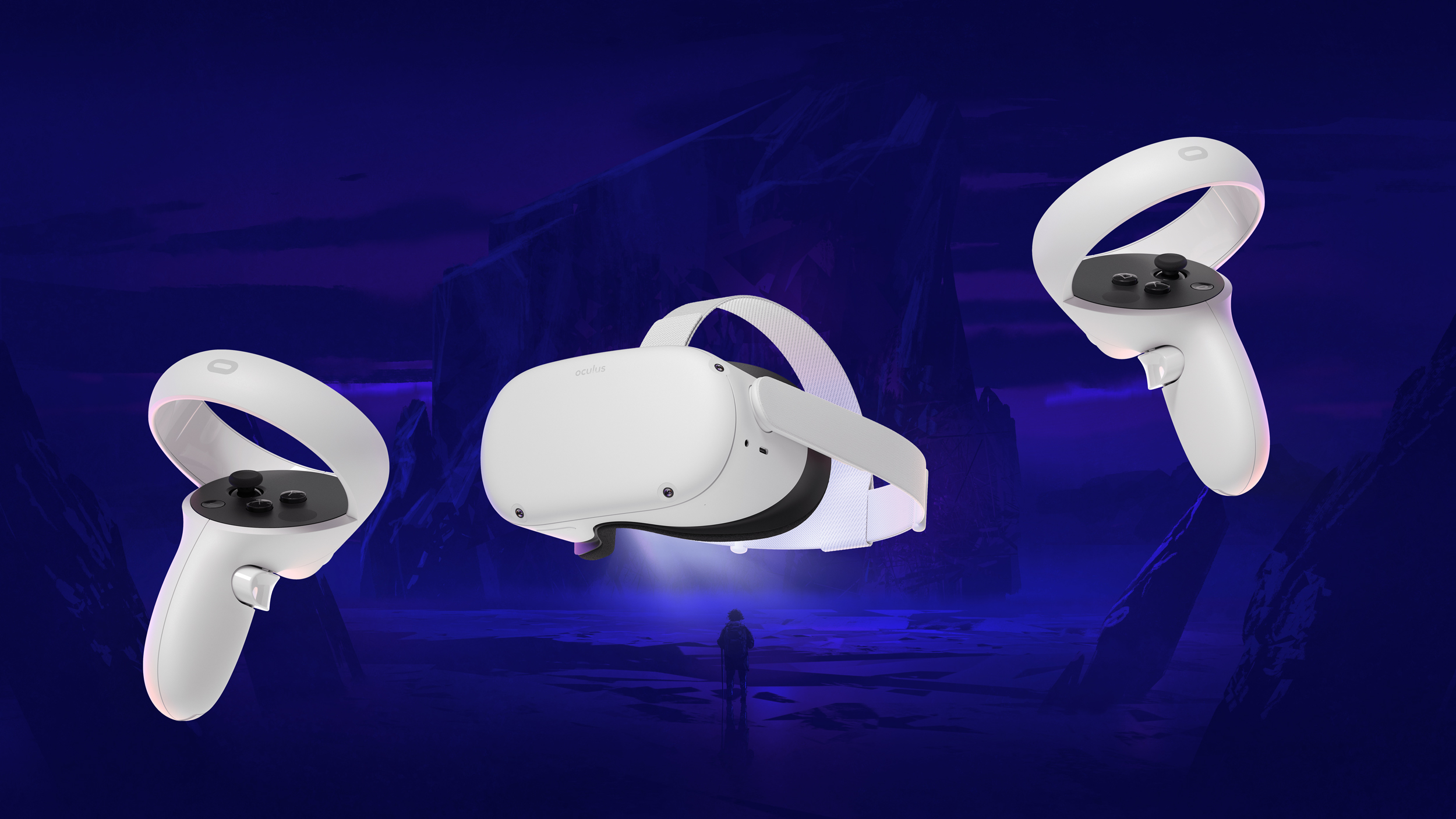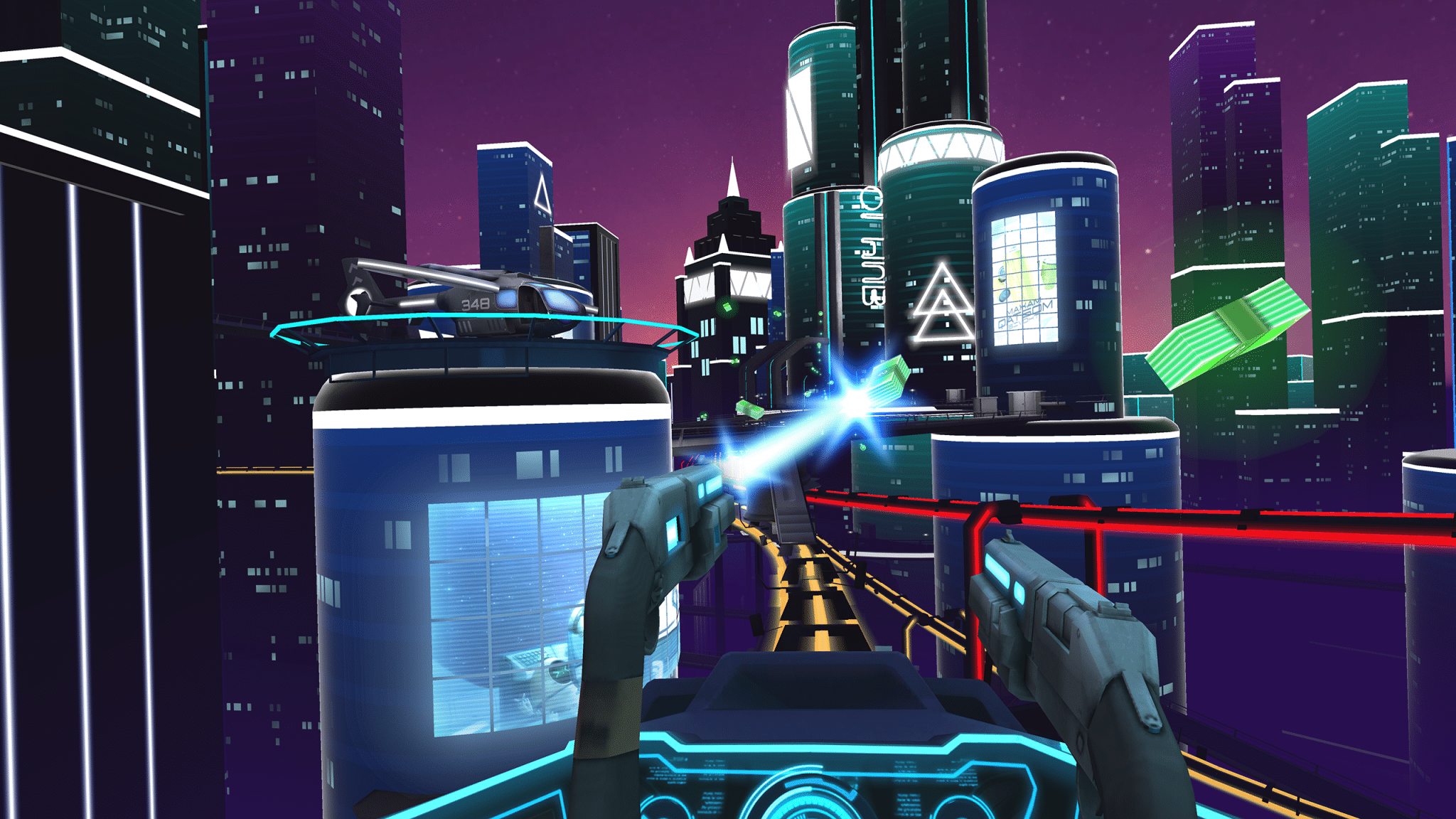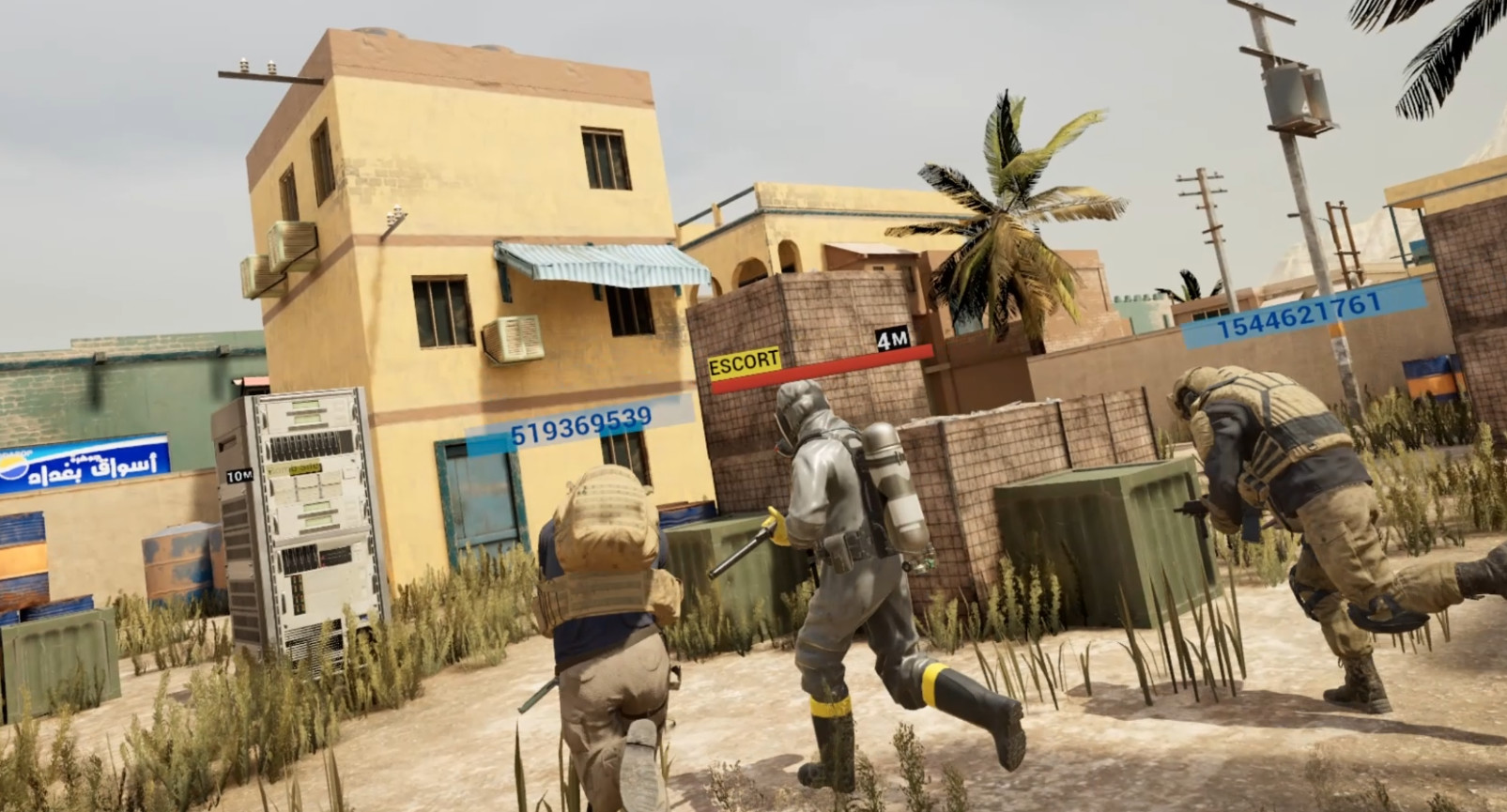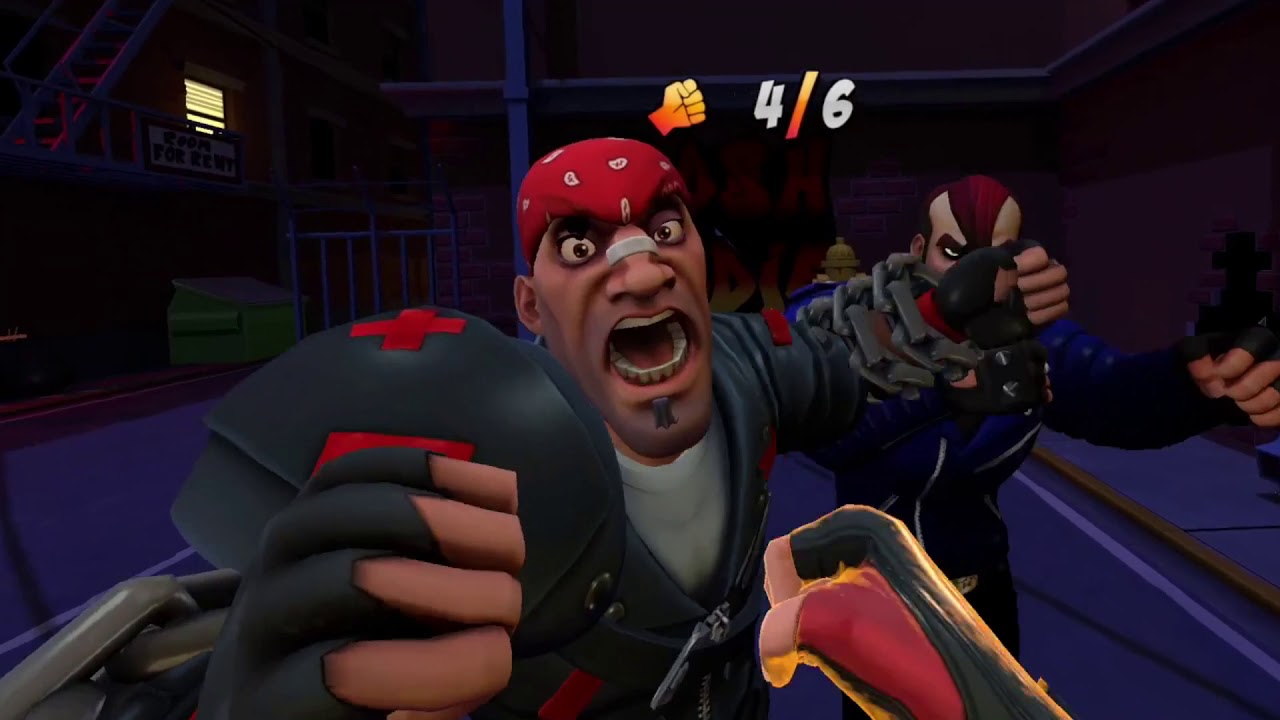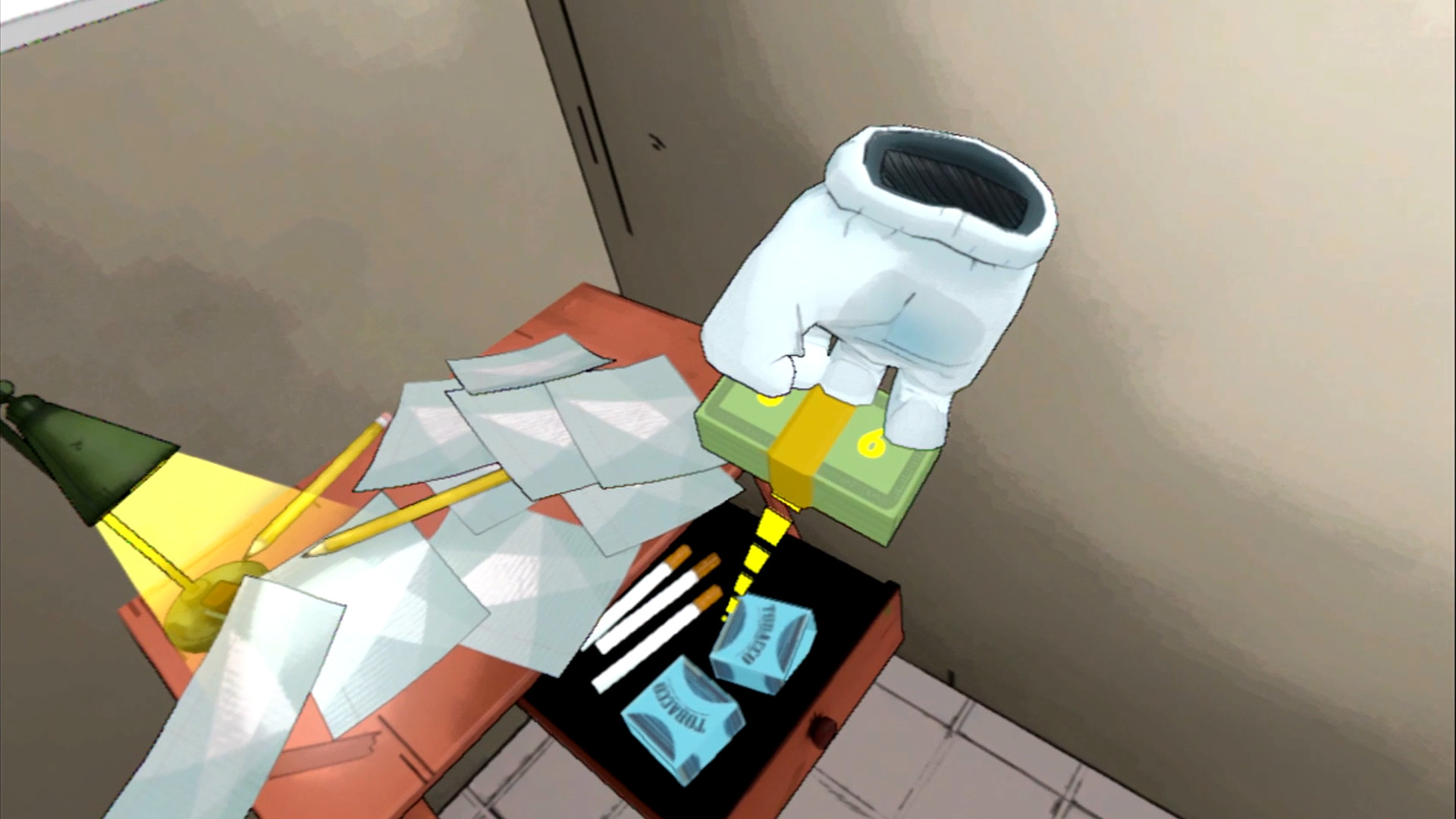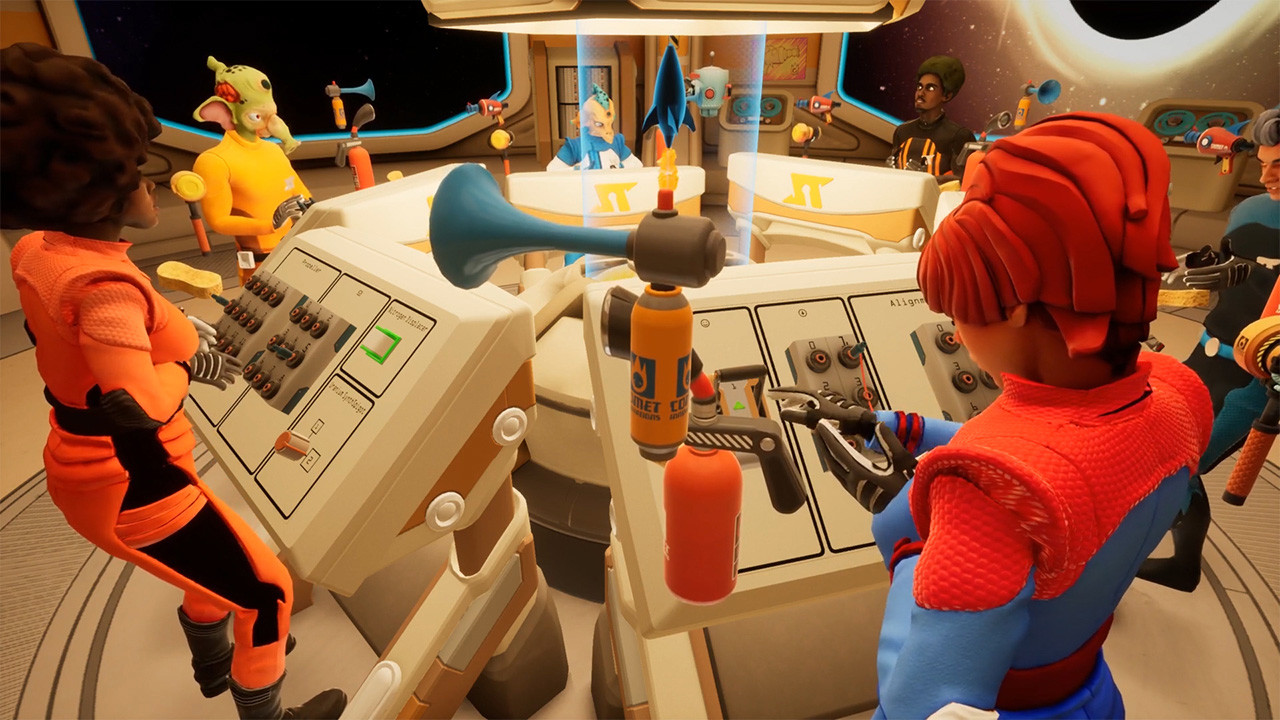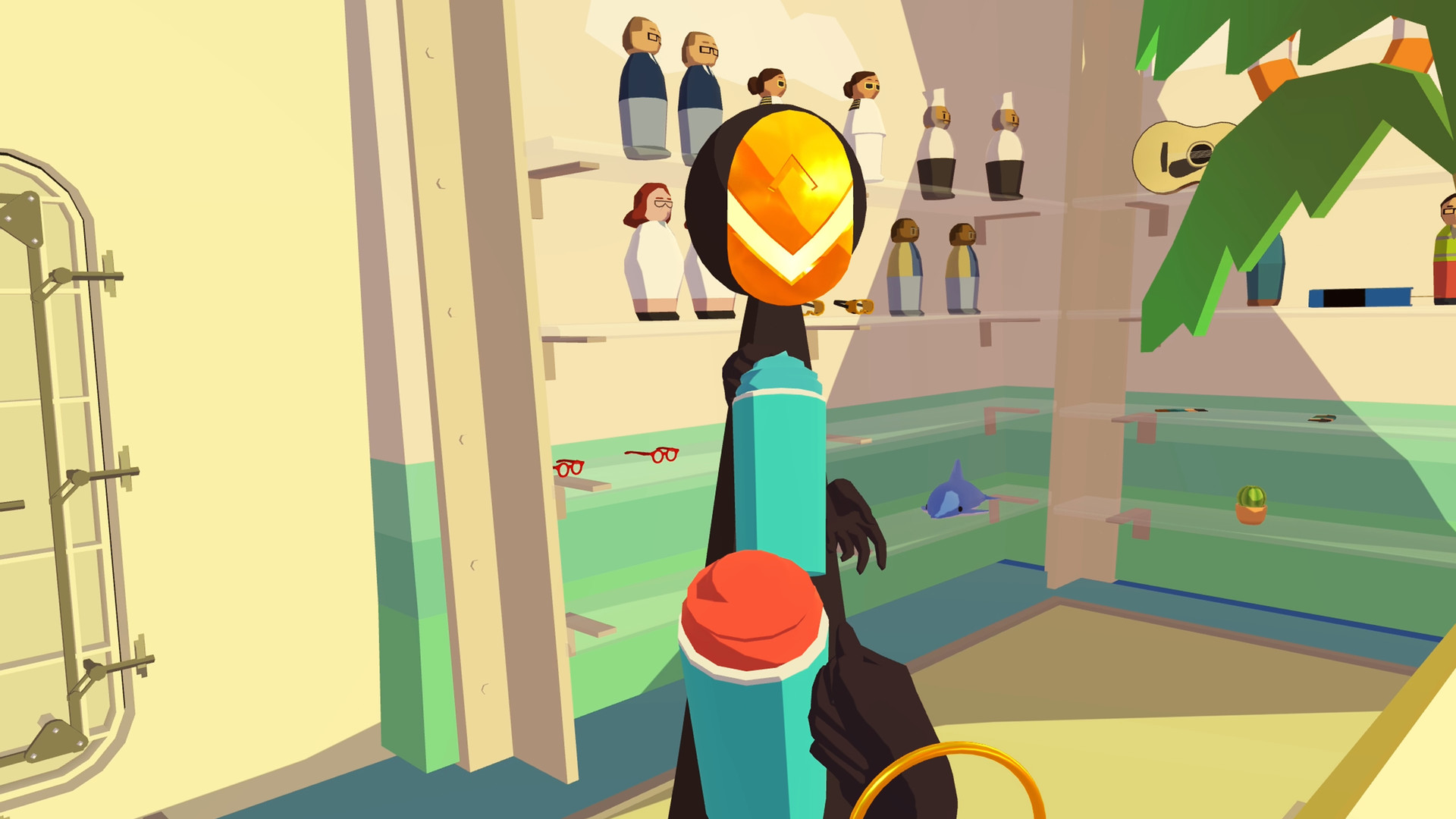If you're a regular reader here at Opium Pulses, you might remember a few series of game reviews we did following the release of the Oculus Quest, we've now reviewed a total of 80 games for the platform and don't intend on stopping!
Now that the Oculus Quest 2 has been out for a few months we figured we'd pick one up ourselves and review games played exclusively on the new headset. Everything we review in this series will be played and tested on our brand new Quest 2, so all pros and cons should be considered.
Click here for part 1: https://www.opiumpulses.com/article/420/10-oculus-quest-2-game-reviews-part-1
Let’s start in alphabetical order, simply ‘cause it's prettier…
AudioShield
From the developer of the AudioSurf series comes AudioShield, a rhythm game that has you hitting (or I guess blocking?) incoming coloured orbs to the rhythm of music. AudioShield is one of the very first VR rhythm games, hitting the scene a good two years before the likes of BeatSaber, and unfortunately, this shows; the menus, graphics and gameplay all show their age pretty heavily. You’ll hit blue and red orbs, including ones with long tails and streams of orbs that span from one side of your view to the other, you’ll also occasionally need to hit purple notes by holding both your shields close together – but that is about it. There are no power-ups, mutators, walls or special phases to keep you on your toes. It’s a primitive and bare-bones rhythm game with around 20 built-in tracks of varying genres, but nothing immediately recognisable. We didn’t play all the baked-in tracks but the 4-5 we did try were pretty bland and uninspiring.
HOWEVER, and this is a big however, AudioShield is the only rhythm game we’ve played or reviewed for the Oculus Quest (we tested another seven) that allows you to download or copy your own MP3s to the game and play them without customising your own song maps. Using similar technology from the AudioSurf games, AudioShield uses an algorithm that automatically syncs the orbs to the rhythm of your own music, most games avoid this feature to encourage you to buy their own song packs. Now while this feature isn’t perfect, and at times the map will feel a little wonky or off-beat, if you are clever about the types of tracks you add and pick songs with prominent vocals or strong beats, the game actually does a fairly decent job of mapping it, especially on the harder difficulties. It also fully supports metadata for all MP3s and let us tell you something, there is something oddly satisfying about seeing all your track data load and display nicely in the game, album art and all!
Now besides the few I’ve mentioned already, there are other negatives to mention, the orbs can sometimes come from outside your peripheral vision, making them impossible to hit unless you’re constantly looking left and right. At times they can also come at you from quite high up, meaning your arms can stay up in the air for extended periods, resulting in you getting tired unnecessarily quick. Apparently, there’s an option to reduce the height of distant orbs but it didn’t seem to make much difference by the time they get to you, you’ll still be blocking some above shoulder height. While AudioShield is probably the weakest rhythm game on the Quest, bordering on below-average, it does gain a lot of points from us for allowing 100% support for your entire music collection. If zero-hassle support for your own music is important to you, at the very least AudioShield has you covered...
7/10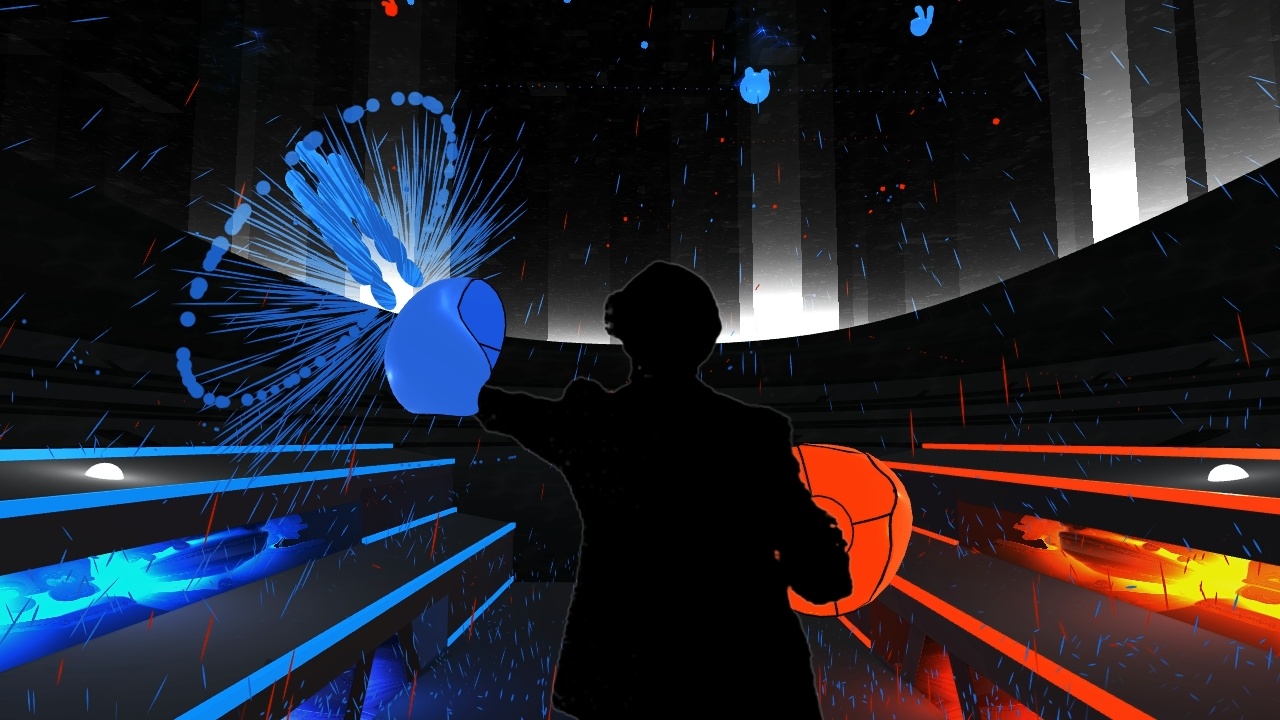
Coaster Combat
Rollercoaster games have found their natural home in Virtual Reality in recent years and Coaster Combat is no exception. With five different stages, featuring a different theme, weapon, music and collectables to match the stage aesthetic, you are tasked with shooting items while you ride along a rollercoaster, dealing with the occasional enemy in a nearby cart as they sling projectiles at you. Each zone has three difficulty modes easy, hard and then a passive non-combat mode for those who just want to experience the ride. There’s then a sixth stage called Gold Rush that is unlocked after getting at least a gold medal in all stages on both easy and hard modes. We particularly enjoyed the gun-slinging pirate themed and futuristic, clearly Tron-inspired tracks.
The game, for the most part, offers quite a lot of enjoyment, the graphics are pretty, the track’s themes are fun and the shooting feels tight and well-polished. Scores at the end of each stage are based on how many collectables you managed to shoot during the level, 90%+ gets you a gold medal while 100%+ gets you a gold trophy. There’s online leaderboards and offline player profiles so you can compete with your friends and family but sadly no multiplayer or co-operative game modes which really would have given this title more replayability. It feels like the game could also do with some DLC tracks to keep things fresh and offer those struggling to unlock Gold Rush an easier way to do so. One thing to note is the game’s lack of anti-sickness features, the store lists the game’s comfort level as “moderate” but we think the final level that has you free-falling through the air down a rickety mountain track could easily fit the ‘Intense’ category.
On the subject of Gold Rush, it seems like this was locked down to artificially give the game more length, as you’ll need to grind each level on easy and hard until you near-perfect them before the new stage opens up. We think to alleviate this a little, gold trophies should act as two gold medals, rewarding those for going the extra mile on the stages they particularly enjoy, otherwise the majority of players might not ever experience all the content. We also think the difficulty balance of the haunted level is little off and the weapons on the mountain level should have been grappling hooks or something, as opposed to just another set of magical wands. All-in-all Coaster Combat is a great deal of fun, but for a sadly limited amount of time losing it a few points for a score of…
6.5/10
Contractors VR
We recently reviewed Onward, another online military shooter for the Oculus Quest, and although we had some good stuff to say about it, there were some things that just made it hard to jump in and enjoy, we figured maybe the genre just wasn’t for us, but Contractors VR goes some way to disproving that. Similar in that it has single-player, multiplayer and co-operative missions but this time seems a lot more polished and approachable. I think if you wanted to get into one military online shooter for your Quest, Contractors VR might be the ideal choice.
Various game modes such as team deathmatch, escort, capture the flag and more do a lot to keep the gameplay fresh and there are many public servers from all main regions open at any given time. Just pick an open room and join straight away, the developers even included basketballs and hoops to shoot while you wait for players to join and the game to start (more games need to give these sorts of fun diversions during long waiting periods). While we were absolutely dominated in PvP servers, we had a lot more success in single-player and online co-op matches, where we actually able to contribute and got a lot better feedback and chatter from teammates.
Our main negatives so far would be the textures, some of them are so poor that they don’t even look like they’ve loaded properly, such a shame as it gives the Quest a bad reputation if these graphics are the first some people encounter when trying mobile VR. Secondly would be the damage indicator, when shot the screen just goes red, corner to corner, there’s no way to be sure where you were shot from and this really can become frustrating when you’re trying to get better at reacting to counter-fire. The lack of proper seated support is another disappointment, I can only imagine being a disabled army vet and wanting to play this, only to find out it favours only those who can stand. Besides these negatives, Contractors shows that military shooters can be fun and accessible to your everyday gamers and for us, scores a…
7.5/10
Path of the Warrior
The Streets of Rage and Double Dragon tones are strong in this one, Path of the Warrior is a first-person street brawler with colourful but detailed graphics and textures. The fighting mechanics feel tight and satisfying and the environments are fun to explore and use to your advantage when finishing off an enemy. There are around six stages that will have you slowly progress through different areas, punching, kicking and whacking bad guys with melees weapons as you go. There’s a boss at the end of each stage with their own unique fighting style, defeating them will unlock a new superpower for you to use in other stages. It’s all very well thought out, looks good and is enjoyable to play.
Another VR game this could be compared to is Drunkn Bar Fight, especially as the first mission of Path of the Warrior takes place in a bar too. However, if you take anything from this review, please know that this game does what Drunkn Bar Fight does, only better and far, far beyond. After finishing each round you’ll be able to complete a handful of mini-games to earn collectables in the extras menu, these are simple diversions but they break up the mindless punch fest and are a nice way to cool down between the chaos of each stage. There’s also online co-op that works flawlessly and really allows you to tag-team your fighting techniques, you can even bring each other weapons and food if you’re feeling extra supportive!
It’s very hard to think up any negatives for Path of the Warrior, especially as they already added what would have been our most requested feature (co-op), I think one small thing we noticed is there’s no way to tell how low your teammate’s health is, so it’s difficult to judge who is more in need of food. We also think this game would benefit greatly from a few extra stages and same-account multiplayer. Besides those few notes, Path of the Warrior is a casual, funny and enjoyable beat ‘em up that will relate to nostalgic gamers who grew up in the 80s and 90s and those who just love to beat up some dudes while they trash the joint! We can’t possibly rate it lower than…
8.5/10
Prison Boss VR
If you come to this game thinking it has anything to do with prison or being in jail you might be slightly disappointed, while you are locked in a single box room and are subject to regular cell checks, this is about where the similarities end. The main focus of Prison Boss VR is actually centred around crafting, trading and selling of goods, without being caught by prison guards. Through the use of simple tutorials, you are taught how to craft certain items and what materials you will need. Then you take on jobs for gangs, mafias and other organisations to supply them with items such as knives, cigarettes and alcohol. You’ll need to craft your items during the night and stash them away in your cell furniture during the day so that your contraband isn’t seized.
If you like games with simple mechanics and almost therapeutic crafting features, then Prison Boss might be the ideal game for you, however, bear in mind there are currently only 11 unique craftable items and only 6 base resources. The game features support for room-scale, standing and sitting preferences, although I always felt like the menus were a little too close for comfort, meaning I had to centre my view and then sit back, resulting in me stretching to grab certain items. The game does support cross-buy between the Quest and Rift versions, so maybe the PC version fares better in that regard. Unfortunately, overall, we didn’t have much fun with Prison Boss VR and that’s a shame, as its reviews both on Oculus and Steam are respectively high, but it just has too many flaws for us to recommend, at least for now.
The graphics are unnecessarily poor, I know it's aiming for an almost cartoon / comic book style but it feels a little like they’ve gone too far in one direction, everything just has blurred or jagged edges. There’s barely any voice acting at all, and the voices you can hear speak gibberish, this makes the tutorials for each item start to grind on you after a while. The gameplay is incredibly shallow, offering just a few dozen items to craft and very little variation in surroundings or gameplay; it's just dull. Games of its type usually have a cheeky sense of humour or charm to them, which make your time in their world just that little more justified, and it looks like Prison Boss aims for this type of feel, but in our opinion sadly falls flat…
4.5/10
Spaceteam VR
Party Games can be a hard sell in VR, but they’re an important genre to help the platform feel less isolating and more a way to enhance a party or family gathering. Spaceteam VR does this beautifully, putting you in the setting of a cheesy TV-inspired spacecraft, your mission is to read the commands on the screen in front of you and hit the appropriate buttons and dials on your control panel, shouting out any instructions for dials that you do not have control over for someone else in the ship to work on. Each command is drenched in silly, scientific, spaceship jargon than makes you feel like you’re in a semi-faithful Star Trek parody!
The commands move on quickly so it's important not to sit on the information you have for too long, but if you shout it out right away you might be talking over someone else, meaning neither of your commands get heard! Getting the timing right quickly becomes impossible as other members of the crew complete their instructions at different times. The game allows for up to 6 players and the more people on board, the more chaotic and difficult it becomes (to the point that 2-player is actually easier as you just take in turns to shout out commands). Your control panel will also become damaged over time and you will need to use a range of different tools to fix it before your objective expires.
Spaceteam VR allows for practice with bots in single-player, but the main juice of the game is all about multiplayer, the multiplayer is cross-platform with various headsets and even mobile phones. The downside to this is that it can at times be difficult to find public games online, so its best to grab a few friends first, even if you just have them play on the free web app. In a way, we were hoping the game would have different modes or mini-games to help keep the gameplay fresh, but there’s nothing stopping this coming in time. Besides that, it is an absolute blast that will test your nerves, patience and the strength of the bonds you have with family and friends. Spaceteam VR enters a wormhole and upon reaching the other side, is left with a score of…
7/10
Spheres
We’re pretty big space phreaks at OP so we love anything that can shove a pretty nebula in our faces. But Spheres seems to be aiming for something a little more profound and artistic across its three short but sweet chapters. Each chapter focuses lightly on different elements of space (planets, stars, black holes, the big bang etc) and with very limited interactivity attempts to show you the beauty and wonder of space and the inhabiting entities of our solar system. At times the graphics are absolutely stunning and really give you an appreciation for the beauty of the cosmos, and other times they really show off the limitations of the Quest hardware, often the visual representation of certain bodies in space look so conceptual that you’re not even sure what you’re viewing, but this choice may have been intentional.
The dialogue doesn’t help with this much, as soothing and well narrated as Spheres is, you’re not going to learn much beyond simple Space 101 basics, especially when all the content is over in under an hour. At times planets are described without even mentioning the name of the planet itself, almost as if pointing out the obvious to us all would ruin the poetry of its message, but there’s no reason this game couldn’t be a baseline learning tool for younger audiences too, but unfortunately, the educational side leaves a little to be desired. We think most people who experience Spheres will walk away with a deeper appreciation for the universe and how precious life is within it, so if this is what the team were aiming for, we’re here to give a thumbs up.
Our negatives would be that there’s no way to turn yourself in-game since the first chapter asks you to reach and touch planets, we struggled in our small office to reach Pluto, so just had to wait for that section of the chapter to time-out and move on. In the second chapter you are presented two black holes colliding, being in the centre with everything spinning around you can bring on quite a bit of sickness, even for veteran VR users like ourselves (maybe being bang in the centre is a little overkill?). Lastly, the narration in the game speaks a lot about the sound, the songs and the voices of bodies in space, as there are no particles or molecules to vibrate in the vacuum of space, there is, unfortunately, no sound. While we understand they were trying to describe the beauty of the solar system in a poetic way, we just wish they’d chosen a different theme besides sound, just made it hard to take it all in without rolling our eyes a little. Anyway, Spheres sings to the score of…
6/10

The Exorcist: Legion VR
So, if you’re deranged, enjoy being terrified and feeling like you might real-life-die any second, then The Exorcist: Legion might be the perfect hellspawn of a game for you! You play the role of a detective that is called to scenes of horrendous murders. The first chapter takes place in a church where you’re investigating the death of a priest. It’s here that you’ll essentially find an Exorcist starter kit and guide, which you’ll take with you when moving on to the other chapters. As you progress and uncover evidence, you’ll piss off spirits and demons that aren’t shy in making their presence and feelings known to you.
Be prepared for false jump scares, to be thrown into darkness, to hear voices and for intense use of high-pitched sound and clever use of light to really get your heart pounding. Each episode shouldn’t take more than an hour each, and that’s even when repeating them to find 100% of the evidence, so the game isn’t exactly lengthy. Although for your health in general that might be a good thing! There is lots of item interaction and story-building mechanics injected to each chapter so for those who like to explore every nook and cranny there’s extra content to discover. There’s also support for achievements, offering more reason to go back over chapters.
Sadly, the main things that let this game down a little are the graphics and physics, the textures are so blurry and muddy in places that it can make the environments feel like lazily slapped-together set pieces, and not actual locations. And the physics for items are incredibly light and floaty, no items have any weight to them and your hands and certain objects just clip straight through walls and furniture, it just feels cheap. Also snap turning completely halts your movement for half a second causing some stuttering, which just isn’t necessary. If you’re just here for the scares and maybe some Exorcist lore, then this game 100% has you covered. For what it does right, we think it deserves a…
7/10
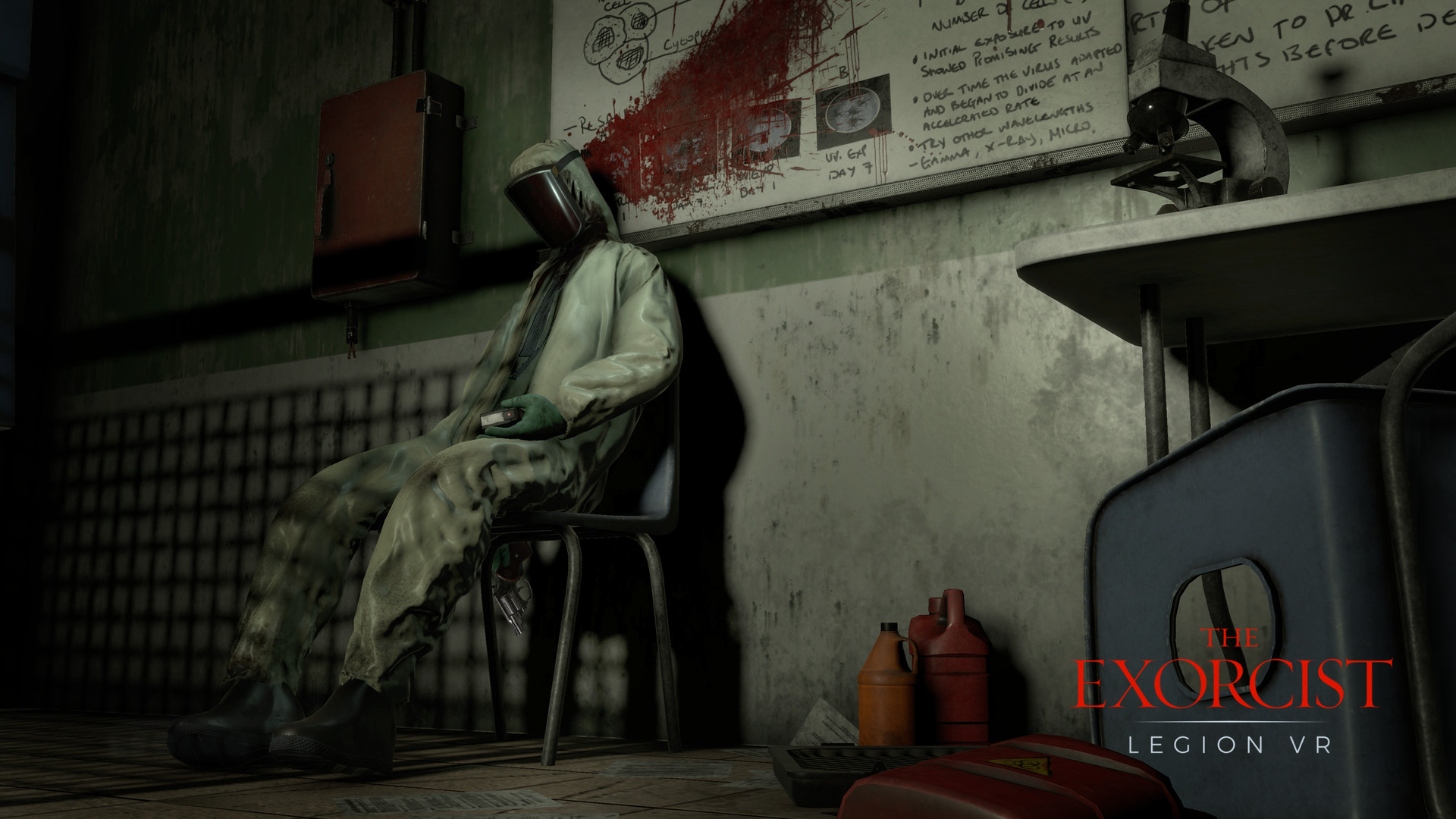
The Under Presents
To even utter a word about what this game contains seems like an injustice to the magic of the surprises that we’d spoil in doing so. For that reason, we’ll try our best to cryptically describe the game without giving anything away. First of all, this game is very arty and the whole world could have absolutely no interaction and still stand up as a virtual abstract art museum, so if that’s not your sort of thing you might want to watch some videos before buying. To put the game in a genre would again be unfair, so we’ll describe it as a conceptual puzzle game that encourages exploration and non-verbal communication with other players to better understand its world.
Now about that puzzle word, we don’t want that putting anti-puzzlers off, the game has a knack of getting you solving things without you even realising you’re doing it. You’ll manipulate matter, space and time itself in peculiar ways, in fact, the game has so many unique ideas and concepts that we’ve never once played a game like it, the closest to its feel might be A Fisherman’s Tale, however, Tender Claws’ own Virtual Virtual Reality does share some of the same atmosphere at times. Not many games can fully justify the content they provide in VR, but The Under Presents is a game for virtual reality, through and through.
It's hard to pick any negatives with a game that aims to provide a certain experience and absolutely nails it and then a little more. You’ll use actions you made in the past to allow your present-self to progress and use multi-dimensional versions of yourself to do something in time that you could never do as a single body... That’s just a taste of the sort of ideas this game has up its sleeve and all we really have is praise. One thing I guess we wished had been fleshed out was the multiplayer, it would have been nice to have some of the experiences that had you work together to solve, otherwise, it sort of feels like a fun but ultimately pointless after-thought. That’s enough hating, every VR user needs to try The Under Presents, even if just the free demo…
9/10
Walkabout Mini Golf
What a pleasure this one was to play, Walkabout Mini Gold is a Miniature Golf (sometimes referred to as Crazy Golf or Putt-Putt Golf) game that presents you with five 18-hole courses with various different environments, from a mountain beachside, castle greens, to Japanese temple gardens. If you’re not aware of the difference between Mini-Golf and standard golf, the mini variant is usually played in multiple small pitches, often with obstacles or sharp walled off areas to make spinning the ball or rebounding off other surfaces part of the strategy in getting to the hole, sometimes having to shoot through incredibly small openings to reach other areas.
Walkabout’s physics feel incredibly real but have enough lightness to still have that enjoyable arcade feel to them, it makes the game properly competitive, without feeling slow or drawn out – it’s a perfect balance. The graphics are bright and low-poly but the artistic style just suits the whole aesthetic the game is going for, peering down over the rest of the landscape actually reveals some stunning vistas. You can teleport to almost anywhere in the map, a feature that is actually encouraged to find the nearly 100 lost golf balls of various colours that you can use in-game, it feels almost like a golf-themed easter egg hunt! We’ve even heard of others playing hide and seek in the game. Arguably game-modes in themselves.
Which brings us on to multiplayer, there’s quickplay with whoever’s online, but you can even create private games for up to 5 people, even locally on 5 headsets using the same Oculus account (more devs need to support this functionality). Our main negative would be the lack of any locomotion controls, even on level ground. The teleporting works flawlessly but it seems odd to leave out this feature in a game with “Walkabout” in the title. Besides this we absolutely love the game, its potential for gaming nights with friends and family is second to very few...
8.5/10
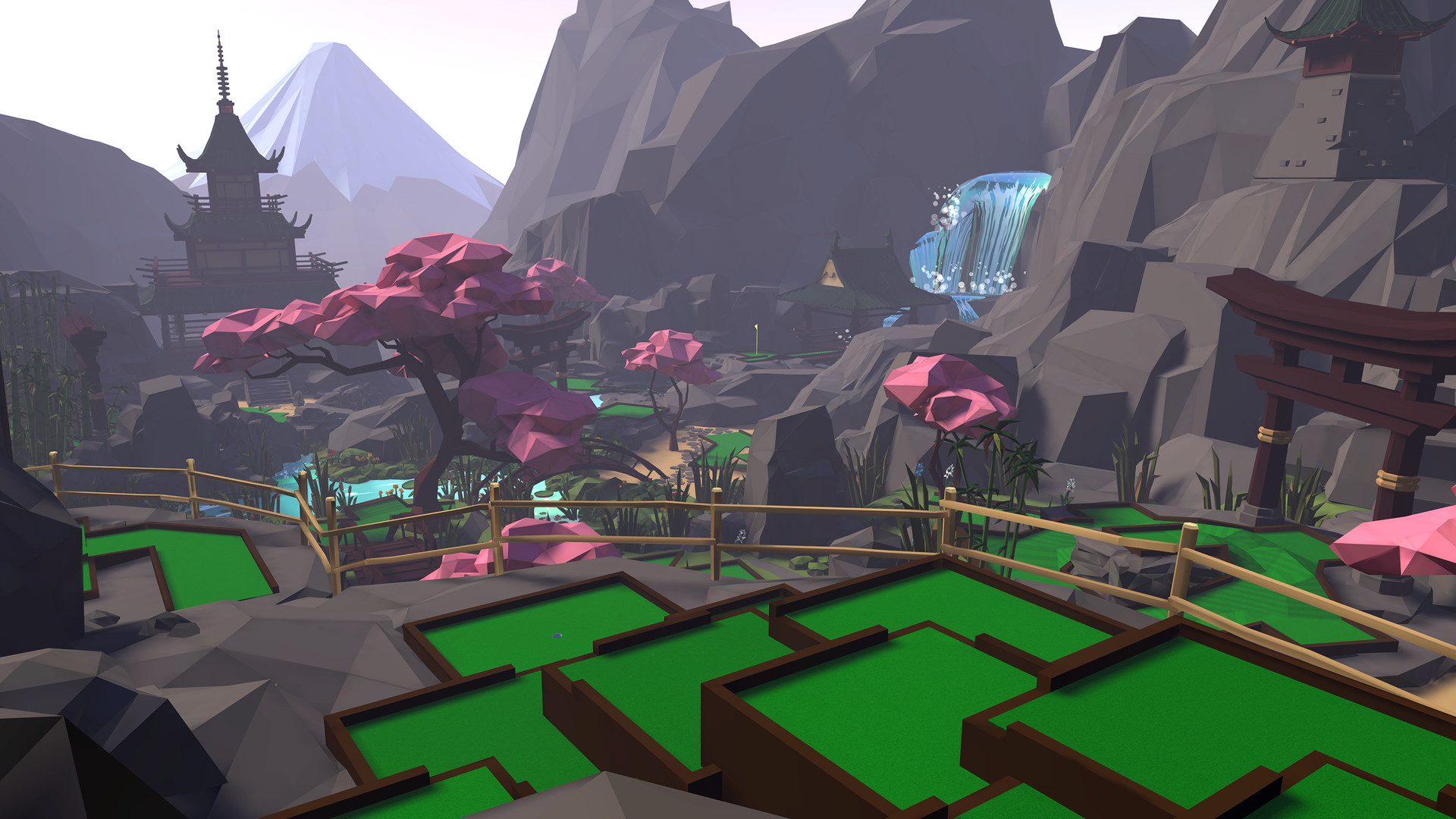
Part 3 is on the way but for now, we'd like to hear peoples' thoughts on the new Oculus Quest 2 and what steps it takes both forwards and backwards for the world of virtual reality as a whole.
What is impressive for you about the headset and what turns you off it generally? Share your thought-spaghetti below!


